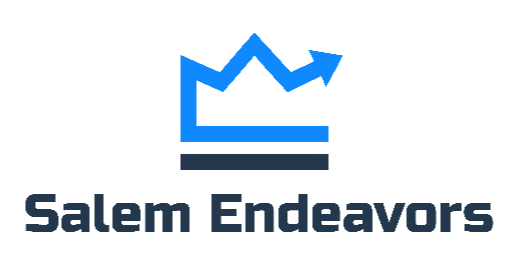5 Ways To Track Retail Store Performance with KPIs

Posted on August 3rd, 2023
Hello there, friends and fellow retail enthusiasts!
We're the team at Salem Endeavors, Based in the vibrant city of Katy, TX, are your trusted partner for business consulting and coaching.
Our mission is to provide small business owners with the strategies, guidance, and tools needed to truly excel.
We believe in the power of knowledge, and that's exactly what we aim to impart through this blog post today.
Sales Per Square Foot: A Fundamental KPI in Retail
The first KPI we are going to discuss is Sales Per Square Foot. It's a classic retail KPI example that allows retailers to evaluate the productivity and profitability of their sales space. Calculating this is straightforward – divide your store's total sales by its total floor area.
High sales per square foot indicate effective space utilization, while low figures could be a warning signal. If your Sales Per Square Foot KPI is declining, it might be time to reconsider your merchandising or store layout strategy.
Stock Turnover: An Inventory Control Specialist
Our second KPI in retail is Stock Turnover. This is a measure of how quickly your inventory is sold and replaced within a certain period. Higher stock turnover typically means you're selling goods efficiently without overstocking. It also helps in maintaining cash flow and reducing storage and inventory costs. Low turnover, on the other hand, might suggest poor sales and excess inventory, which can impact your cash flow negatively.
In the context of the questions "how are employee mistakes costing your business" and "is there fraud happening at your store?", Stock Turnover can be an insightful KPI. Employee errors in inventory management or cases of theft can lead to stock discrepancies, which will ultimately affect your stock turnover rate.
Conversion Rate: The Sales Catalyst
The next retail KPI we'll examine is the Conversion Rate. This represents the percentage of visitors who end up making a purchase. It’s a potent tool for gauging store effectiveness. Low conversion rates might hint at issues with product range, pricing, store layout, or customer service.
Additionally, examining the Conversion Rate can shed light on whether your employees are sufficiently motivated. If the staff is not engaging well with customers or failing to provide adequate information about products, it could result in a lower Conversion Rate. Developing a sound incentive plan, such as a well-designed bonus or commissions system, could help in boosting this KPI.
Average Transaction Value: Maximizing Every Sale
The fourth KPI on our list is Average Transaction Value (ATV). This is calculated by dividing total revenue by the number of transactions. It provides an understanding of your customers' spending habits. A lower ATV might indicate that customers are not spending as much as they could in each transaction. This KPI becomes particularly important when looking at upselling and cross-selling strategies. If you notice a decreasing ATV trend, it might be time to train your staff in these selling techniques or re-evaluate your pricing strategies.
A strong correlation exists between ATV and employee motivation. Suppose your staff is adequately incentivized, either through a well-crafted bonus scheme or an effective commission plan. In that case, they're more likely to upsell or cross-sell, thereby increasing the ATV.
Gross Margin: Profitability Above All
The final retail KPI we’ll discuss is Gross Margin. This is calculated by subtracting the cost of goods sold (COGS) from total sales revenue, and then dividing the result by total sales revenue. The figure is usually expressed as a percentage. Gross Margin reveals how well your business generates profit from direct sales, and not including indirect costs like overhead expenses.
If you are experiencing consistent low Gross Margin percentages, it may indicate pricing issues, cost inefficiencies, or a high level of markdowns, all of which warrant urgent attention. On the flip side, a healthy Gross Margin percentage gives your business a better chance of achieving profitability.
Are You Ready To Harness The Power Of Retail KPIs?
Now that we have covered the what is KPI in retail question and explored some pivotal retail KPI examples, it's over to you. Effective use of KPIs can provide valuable insights into various aspects of your business, including employee performance, potential fraud, and the success of your sales strategies. But remember, data is only as valuable as the action it triggers.
If you're unsure about the right KPIs for your retail business or need assistance implementing them, Salem Endeavors is here to help. We provide comprehensive business consulting and coaching services, tailoring our approach to fit your unique needs. From providing a free introductory consultation to designing bonus/commission plans, we are here to help you succeed.
So, what are you waiting for? Reach out to us at (346) 436-7433 or [email protected], and let's get your business to the next level. We even have an exciting case study showing how we have helped businesses create dashboard reporting, improve in-person sales, reduce expenses, and automate processes. The success of your retail business is only a phone call or an email away!
Get in Touch
How Can We Help You Today?
Our team of skilled consultants is awaiting your contact. Please send us a message, and we will reply as soon as possible.
